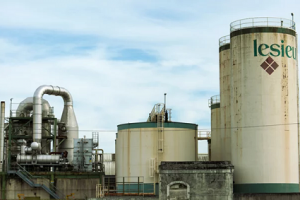3 Materials ETFs To Help Build Your Portfolio

Source: Andre Robillard Via Unsplash
Not all materials ETFs are created equal
There are 11 sectors represented in the S&P 500 with weights ranging from 2.81% at the bottom to 21.45% at the top. Guess which group resides at the bottom? Materials.
That is not the only point underscoring the materials sector’s diminutive status. The Materials Select Sector SPDR ETF (NYSEARCA:XLB), the largest materials exchange-traded fund, holds just 28 stocks and the Dow Jones Industrial Average is home to just one materials stock — Dow Inc. (NYSE:DOW).
XLB “seeks to provide precise exposure to companies in the chemical, construction material, containers and packaging, metals and mining, and paper and forest products industries,” according to State Street.
Size aside, there are plenty of opportunities to be had with materials ETFs and investors may want to consider getting in while the getting is good because the sector is on fire in the first half of June.
“In fact, the materials group, the sector that tends to be the most sensitive to global economic growth expectations, is on track for its best monthly gain since October of 2015, when it soared 13.45%, according to Dow Jones Market Data,” reports MarketWatch.
For investors looking to embrace a small sector with big potential, here are some materials ETFs to consider.
VanEck Vectors Junior Gold Miners ETF (GDXJ)
Expense Ratio: 0.53%, or $53 annually per $10,000 invested
The VanEck Vectors Junior Gold Miners ETF (NYSEARCA:GDXJ) is one of the largest gold miners funds, meaning it is also a materials ETF and a volatile one at that. GDXJ has a three-year standard deviation of 30.50%, roughly triple the comparable metric on the S&P 500. Indeed, this materials ETF is not for the faint of heart and it has a tendency to overshoot gold’s price action in either direction.
Fortunately, the current climate sets up well for gold, as highlighted by GDXJ’s month-to-date gain of nearly 9%.
“If you look at the GDXJ [VanEck Vectors Junior Gold Miners ETF] and go back to 2010, the adjusted return in Canadian dollars is down about 85%. Then if you look deeper … at the really junior juniors, which aren’t even in these ETFs, it’s even more so. We have an industry where you’ve lost 80% to 90% of the value — plus,” said Jonathan Goodman, executive chairman of Dundee Corp., in an interview with Kitco News.
Another catalyst could boost this materials ETF in the second half of the 2019: the Federal Reserve. If the Fed lowers interest rates, gold almost certainly rallies in response, likely sending GDXJ and miners ETFs higher along the way.
Invesco MSCI Global Timber ETF (CUT)
Expense Ratio: 0.55%
Among materials ETFs, timber funds — all two of them — often go overlooked. The Invesco MSCI Global Timber ETF (NYSEARCA:CUT), which tracks the MSCI ACWI IMI Timber Select Capped Index, gives investors nuanced materials exposure with a decent yield.
CUT’s underlying index “measures the performance of securities engaged in the ownership and management of forests, timberlands and production of products using timber as raw materials,” according to Invesco.
CUT holds 77 stocks, giving it a significantly larger roster than many traditional materials ETFs and some of that size is attributable to the fund being a global materials ETF. Eleven countries are represented in this materials ETF with the U.S. commanding a weight of 42%. Of the other 10 countries found in this materials ETF, eight are developed markets.
Nearly 56% of CUT’s components are classified as value stocks and the materials ETF reflects that value proposition with a price-to-earnings ratio of just 12.82x, a healthy discount relative to broader domestic equity benchmarks.
SPDR S&P Mining & Materials ETF (XME)
Expense Ratio: 0.35%
The SPDR S&P Mining & Materials ETF (NYSEARCA:XME) is an equal-weight materials ETF with diverse exposure to miners of several industrial and precious metals.
XME’s underlying index provides exposure to “the following sub-industries: Aluminum, Coal & Consumable Fuels, Copper, Diversified Metals & Mining, Gold, Precious Metals & Minerals, Silver, and Steel,” according to State Street.
In other words, XME is exactly the type of fund that can be stung by tariffs. That is exactly what has happened to this materials ETF. XME is down 11.41% in the second quarter and resides more than 31% below its 52-week high, putting the fund deeply into a bear market.
XME is also volatile as far as materials ETFs are concerned. Over the past three years, XME’s annualized volatility is 26.20% compared to 15.60% for the aforementioned XLB. Problem is, XME often does not justify that increased volatility because it can trail traditional materials ETFs by wide margins.
As of this writing on June 17, 2019, Todd Shriber did not hold a position in any of the aforementioned securities.
See Also From InvestorPlace:
- 3 Utility Stocks With Years of Dividend Growth
- 7 High-Quality Cheap Stocks to Buy With $10
- 3 Consumer Discretionary ETFs That Could Heat Up This Summer
Category: Sector ETFs




